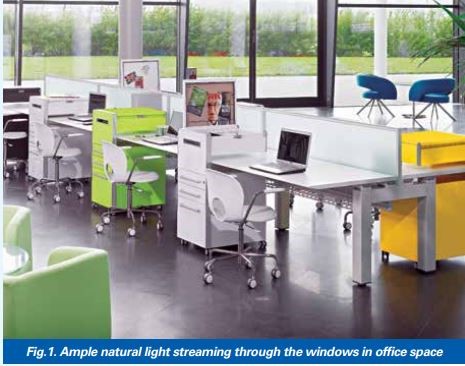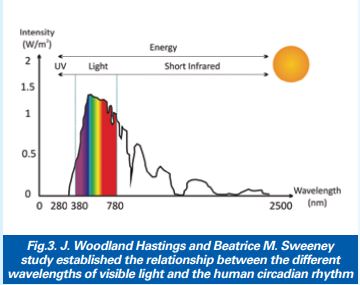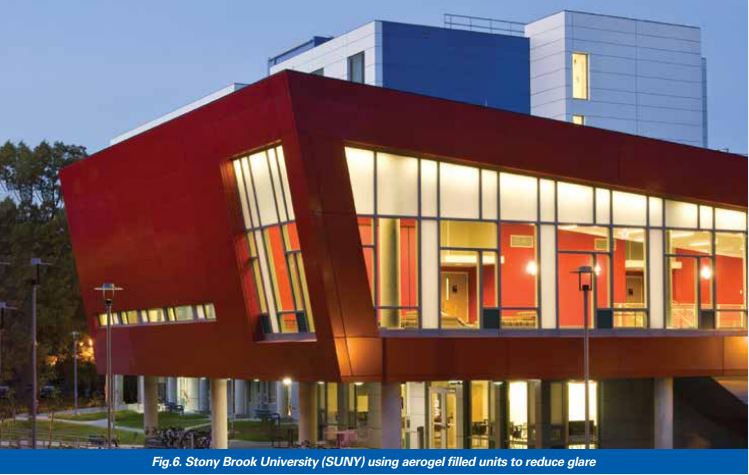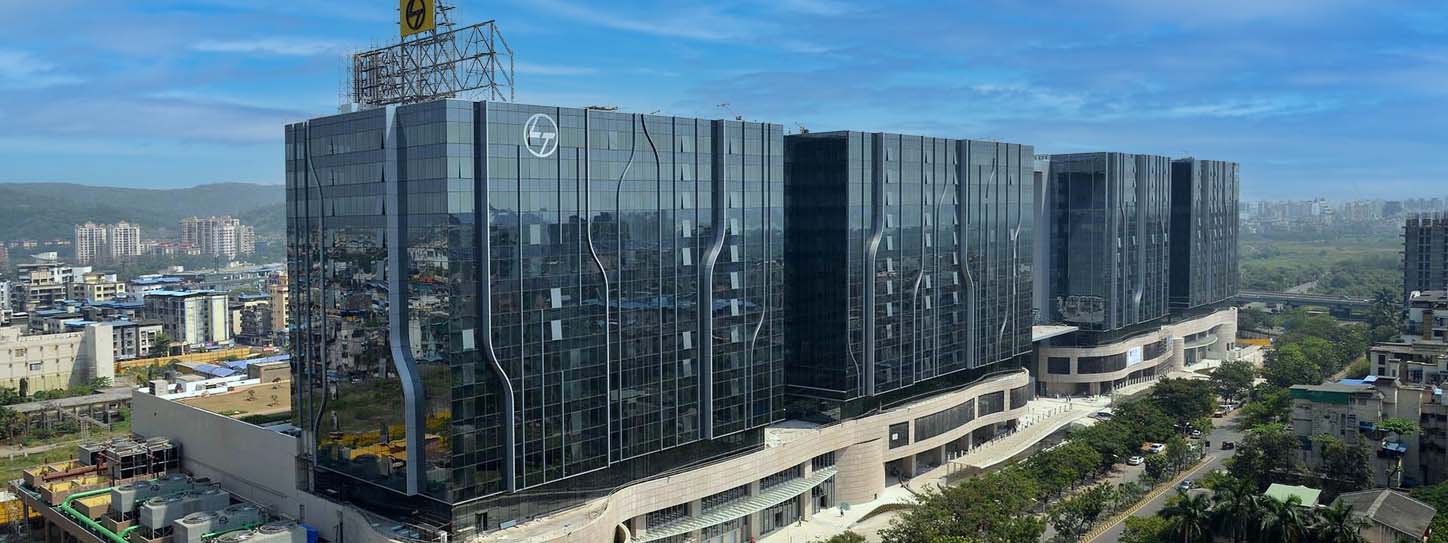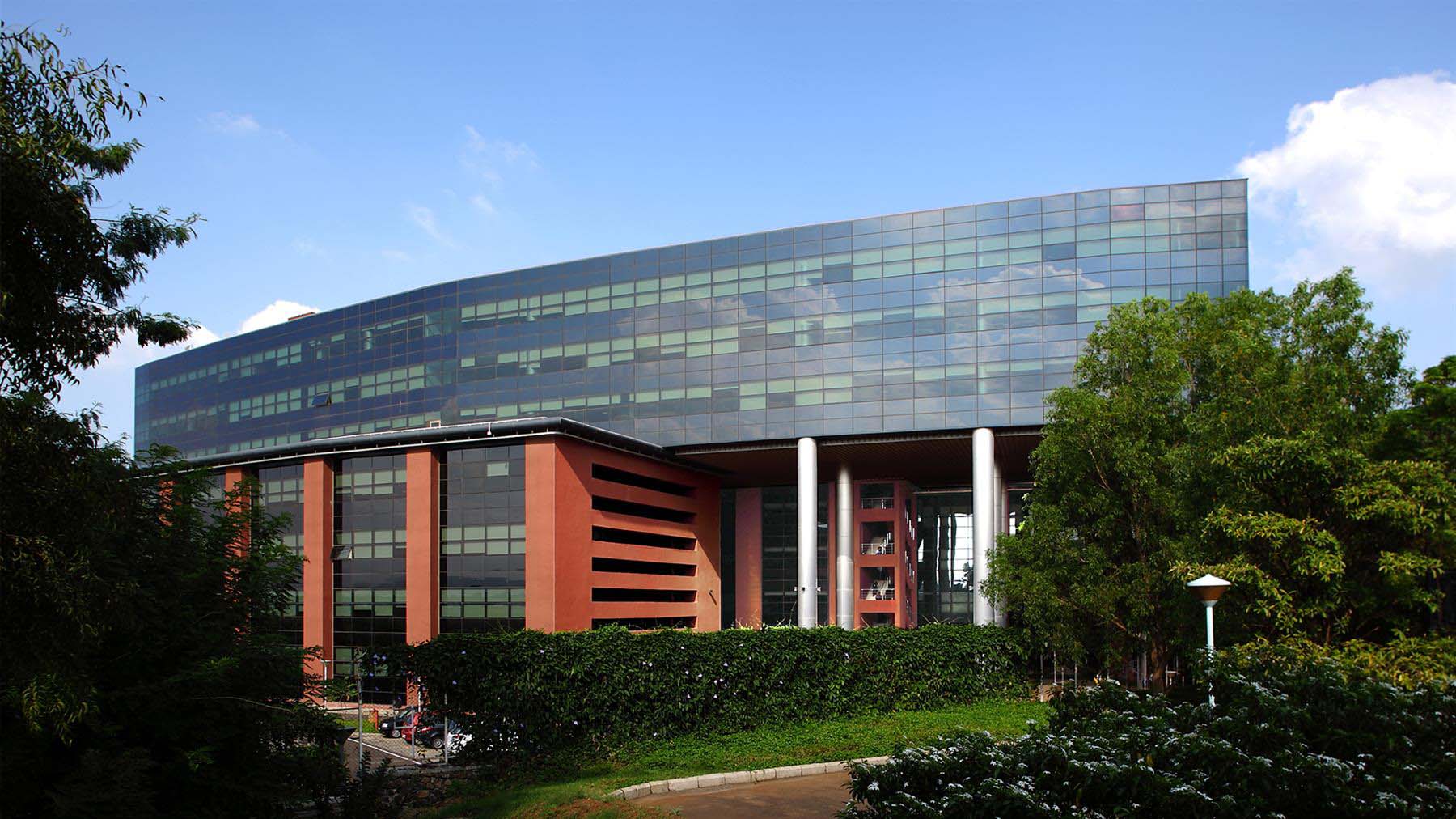Glass Façades - Culprits or Geniuses?
 About the Author:
About the Author:
Tariq Kachwala (Director, FG Glass, Mumbai) has 12 years of experience in the glass processing industry spearheading marketing, strategy and new business development in his organisation. He is also a consultant to architects and facade specialists on the use of glass in buildings and has delivered over 350 projects across 25 countries. Recently he has been extensively involved in consulting on glass and f re-safety and has written and presented several articles and lectures on this subject. Tariq has a Bachelor of Engineering degree in Computer Science from the Mumbai University and MS-MBA from the Courant Institute of Science and Stern Business School, New York University. Further, he serves as a managing committee member at the Federation of Safety Glass, is a founding member of the Glazing Society of India, an advisory board member of Glass Academy, member of the Confederation of Construction Products and Services, and technical advisor at Structural Glass Research and Testing Facility – a JV of Glazing Society of India and IIT Madras.
First things first, I wish to make it clear that the views presented in this article are not influen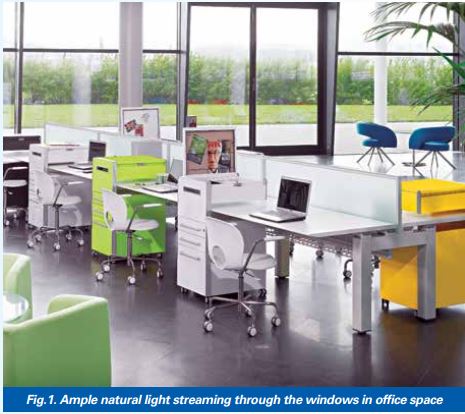
This article focuses on three key aspects of a glass facade - daylighting, energy and safety - and in the process analyses its effects, its benefits, the problems arising from its use and tools to help overcome some of these problems. For ease of understanding and to maintain focus on the core topic
of this discussion, I have overlooked the regulatory requirements of glass facades and focused solely on their characteristics which makes them either the right choice or otherwise when designing buildings. Also the context of this discussion is keeping climatic conditions of tropical countries like India under consideration.
Are We Creating a Problem and Then Looking at Ways to Solve It?
I recently attended an award function where an eminent speaker shared her insights on the problem of energy ingress resulting from expansive glass facades and then asked an interesting question, “Are we first creating the problem by designing buildings with large glass walls and then trying to solve it by using shading devices, dynamic facades and high-performance glass, etc.?” The presentation raised an interesting anomaly: if glass facades were truly allowing this large heat-entry in buildings which is rightfully not desirable in tropical-climate dominated countries like India, why are architects, developers and even end-users obsessed with using and living within glass facades, and not any other conventional but higher energy-efficient building materials? Turns out, glass is not only the preferred choice, it is also one of the most attractive, economical and fastest cladding options. So should we give in to aesthetics, cost and time, or accord higher priority to energy-efficiency? Or maybe this conundrum can be resolved without any downside? To conduct a detailed analysis, this discussion is sliced into the following three broad segments :
1. Glass and Daylighting
2. Glass and Energy Efficiency
3. Glass and Safety
If glass facades were truly allowing this large heat-entry in buildings which is rightfully not desirable in tropical-climate dominated countries like India, why are architects, developers and even end-users obsessed with using and living within glass facades?
Glass and Daylighting
Picture two office scenarios: one artificially illuminated without any window opening and the other with ample natural light streaming through the windows. In a survey conducted in 54 office buildings, 99.10% said they want windows in offices, 0.90% said it didn’t matter and not a single respondent said they wanted a no-window office. Not surprising really, since this is not just an intuitive or random preference but 
Being exposed to daylight is an important factor that contributes to our physiological, psychological and physical well-being. Research has conclusively demonstrated that light influences hormone secretion, heart rate, alertness, sleep propensity, body temperature and gene expression. To understand this important point, let’s have a detailed look at our relationship with sunlight.
Fundamentally, sunlight - or solar spectrum - consists of three parts: ultraviolet (2% of total energy), visible light (47% of total energy) and infra-red (51% of total energy). The visible light part of the spectrum consists of the seven colours: violet, indigo, blue, green, yellow, orange and red, and are responsible for our eyes seeing everything the way they do.
As far back as 1958, J. Woodland Hastings and Beatrice M. Sweeney set the platform that would later establish the relationship between the different wavelengths of visible light, particularly blue, and the human circadian rhythm (Fig. 3). In a 2008 study conducted in the United Kingdom, office workers who were exposed to blue light in the morning experienced both a reduction to day-time sleepiness. and improvements to the quality of their night-time sleep. Researchers at the University of Greenwich tested that working under ‘blue-enriched’ light bulbs was better than normal office lighting. In a carefully designed cross-over study lasting two months, workers noticed the benefits of blue light, reporting that they felt happier, more alert, had less eye strain and even got more work done! So why exactly does this happen?
Our brain produces two hormones, melatonin and serotonin, that play an integral role in ensuring a correct sleep cycle and also boosting our mood. Exposure to sunlight is thought to increase the brain’s release of serotonin. Sunlight cues trigger special areas in the eye’s retina, which triggers the release of serotonin. This is associated with boosting mood and helping a person feel calm and focused. Without enough sunlight exposure, a person’s serotonin levels can dip low. Low levels of serotonin are also associated with a higher risk of seasonal affective disorder (SAD).
At night, darker lighting cues trigger the brain’s pineal gland to make another hormone called melatonin. This hormone is responsible for helping a person feel sleepy and go to sleep. Absence of sufficient amount of sunlight can pre-trigger melatonin production, cause occupant fatigue and also reduce productivity (Fig. 4). The blue light of the visible light spectrum lowers melatonin in the blood. Caffeine does the same!
An argument can be made that artificial lighting can substitute natural sunlight and produce similar performance, however artificial lighting falls short of producing sufficient blue light wavelength and does not have the same effect on productivity as sunlight when it is combined with external views.
Undoubtedly, the greatest benefit glass offers today to architecture is transparency. No other cladding material has the capability to make walls invisible and provide us a connection to the outside world. In today’s crowded urban spaces, it is not only desirable but also imperative that we connect with our external environment to the maximum possible and not be confined within closed spaces. Access to uninhibited views of the surroundings positively influences productivity and increases concentration. Studies have shown that integrating quality daylighting schemes into an office can save over Rs.1,50,000 per employee per year in office costs while 10% of employee absences can be attributed to architecture with no access to nature.
Undoubtedly, the greatest ben
But not all is desirable about daylight. It also brings with itself an unwanted facet: glare. Glare contributes to visual discomfort and forms unevenly lit spaces within the building interior. To counter this, there are multiple ways glare can be regulated, however they all add to the cost of the facade and in some cases are also difficult to maintain. For instance, many facades use external shading devices like horizontal or vertical louvers. These shading devices exercise higher costs and need to be cleaned frequently as they tend to accumulate dust and may need special equipment for periodic maintenance. There are however several innovations in the field of shading devices in recent years, most notably adaptive shading techniques that change orientation or opening size depending on the amount of sunlight falling on them. Some projects like the Al Bahar Towers in Abu Dhabi (Fig. 5), RMIT Design Hub in Melbourne and the Keifner Techno Showroom in Austria are not only architecturally impressive but also provide unique and innovative solutions to countering glare and creating comfortable and energy-efficient workplaces.
Alternatively, new products like electrochromic/ photochromic coatings and aerogel-filled units are gaining popularity (Fig. 6), although currently their high price levels are a limiting factor for extensive penetration. With time and with increase in usage, these adaptive and light-diffusing innovations will shape the future of glass facades.
Glass and Energy Eff ciency
Now that the positive effects of glass and daylight have been established, let us analyse the detrimental characteristic of sunlight for cooling-dominated energy countries like India: heat. The far-end of the solar spectrum is the infra-red radiation which converts to far infra-red when reflected off surfaces.
The need for lower window-to-wall ratios stems from the relatively low filtration of heat energy through glass facades compared to traditional brick or concrete walls, which are more energyabsorbing and result in cooler interiors.
To balance light with heat, glasses have to be spectrally-selective. Till a few years back, coatings were simple depositions of metallic oxides on glass through a process called pyrolysis. Although they were reasonably effective in blocking solar heat (far end of the solar spectrum), they did so at the expense of light transmission which meant that to achieve cooler interiors, the glass facade itself turned dark. This attenuated the very reason of using glass facades in the first place.
Today, however, there have been phenomenal advancements in coatings, both in technology and range. Magnetron sputtered vapour deposited (MSVD) coatings have the advantage of extreme flexibility and possibility of depositing several coating layers (in some cases more than twenty) on the glass substrate. Silver-based low-emissivity coatings come with the unique benefit of being opaque to infra-red wavelength and transparent to the visible light spectrum, hence making the glass very highly spectrally-selective. This means that the facade can allow a high amount of light lux inside the building while keeping it cool, a highly desirable feature in tropical countries like India.
To understand the concept of spectral-selectivity better, consider the light-to-solar gain in the following two product comparisons: Glass 1 and Glass 2. In both cases, we start out with an intent to keep the solar heat gain inside the building to less than 25%. This is a reasonable assumption and this will keep the load on HVAC systems at an acceptable level. For simplicity, we shall consider a basic 24 millimetre insulated combination with a clear inner lite. The first is a coated glass introduced in the 1980s with a basic reflective metallic oxide coat. The second glass is coated.
* Payback period considers a 10,000 square meter coated glass facade in relation to a clear glass facade. Energy costs of Mumbai are considered in this calculation.
with the latest multi-silver low-emissivity coating. The chart above demonstrates their detailed spectrophotometric properties.
You will notice that there is a substantial increase in the Light-to-Solar Gain (LSG) ratio between the two glass configurations. The new advancements in coatings have enabled us to design energy-efficient architecture that reduces the dependence on both artificial lighting and heating or cooling systems. Further the cost difference of approximately 30%, which is insignificant when the cost of entire facade is considered and the highly constrained payback time completely justifies the additional capital expenditure.
Today, there are several IGBC or USGBC1 rated green buildings that have massive glass envelopes. This is primarily due to the above described spectrally-selective properties of modern-age glasses combined with their high recyclable content. However building designers and planners need to exercise caution in the use of glass in buildings. It is important to understand that the selection of glass is hinged on many factors such as the building orientation, its location with respect to the sun-path, local climate conditions and the shading falling on the facade due to neighbouring structures. Also, there is no one-size-fits-all here and the glass selection for every building will vary depending on the above factors.
Glass and Safety
Glass has also recently been a subject of intense and heated deliberation with regards to its safety characteristics, particularly related to fire safety. Instances of glass falling off facades (some with fatal consequences) and the fire-authorities blaming full glass facades for hampering their rescue operations have filled several newspaper pages in the last few years. In almost all fire incidents in high-profile buildings in Indian metropolises, glass has been victimised and portrayed as the biggest hurdle to effective and quick rescue operations. Statements such as “building lacks ventilation”, “heat-trap” and “couldn’t penetrate the glass wall to rescue people” cemented the perception that glass facades and fire-safety are not complementary for a safe architecture.
In both aspects of safety, general or fire-specific, glass has been proven to be a safe cladding material worldwide, provided of course, it is installed as per correct guidelines. I have come across several instances where safety glass was overlooked in critical applications2 and ordinary annealed glass and not safety glass (toughened or laminated) was installed to save on costs. There have been instances were basic rules such as openable panels of a certain minimum area to allow smoke to escape in the event of fire were breached, and when installed, they were either not marked for easy identification or then kept in a permanently locked state! These basic violations are hugely detrimental to human safety and should be completely disallowed through education and regulatory means.
It is also imperative that any regulatory proposal or guideline has to be non cost-prohibitive, implementable, actionable and sustainable from a practical standpoint and the concerned authorities should decide on the building codes accordingly. From the context of fire-safety alone, it is also important to understand that glass is a non-combustible material and is in fact easier to break in than conventional brick walls to facilitate people evacuation. Again, in the interest of keeping focus on our core deliberation on whether glass is the right choice of glazing or not, I will refrain from going into product selection and installation basics. The right choice of glazing will address all safety concerns and if implemented correctly, will in turn ensure perfectly safe architecture.
It is important to understand that glass is a non-combustible material and is in fact easier to break in than conventional brick walls to facilitate people evacuation.
Thankfully, there has been considerable and appreciable progress in defining building guidelines and the new National Building Codes (due anytime now) will have a chapter (Part 6, Section 8) on Glass & Glazing which will define some basic glass installation and product selection criteria for buildings. Further the Confederation of Construction Products and Services (CCPS) has published a very useful and concise Guidelines on Use of Glass in Buildings - Human Safety that elaborates the type of glass to be used based on its application area. I would strongly recommend that all architects, consultants and engineers refer these publications to ensure conformance to safety norms as well as regulatory yardsticks.
To Sum Up
The need of the hour is to build smart. Instead of indiscriminate and unplanned usage of glass as is seen in some buildings, it is important that architects and consultants jointly design architecture that is sustainable and has the minimum possible load on the heating and cooling systems. High-performance coatings offering exceptional spectral selectivity should be adopted. As mentioned above all nuances of the facade that are responsible for heat-ingress should be considered during the glass selection process. Glare problems should be mitigated with the use of the various shading devices available today. Adequate ventilation should be provided at regular intervals for air circulation and to facilitate emergency smoke and people evacuation. The design should conform to the building’s overall fire-prevention strategy and the directives issued by the local fire-authorities should be implemented.
The need of the hour is to build smart. Instead of indiscriminate and unplanned usage of glass as is seen in many buildings, it is important that architects and consultants jointly design architecture that is sustainable and has the minimum possible load on the heating and cooling systems.
Glass, like any building material is not perfect. Arguments against its energy-efficiency performance, especially in hot climates, does have its fair share of merit. Concerns over its post breakage behaviour cannot be disregarded. Apprehensions shown by fire-authorities in tackling fire in glass-draped buildings should also be carefully analysed. In spite of the above concerns, glass has to its credit a whole list of features that makes it indispensable as a building material. Recent advances in tints and coatings have now ensured that glass has exceptional performance not only aesthetically but also functionally. It is no surprise then that the adoption and use of glass in facades and architecture is on the rise. Architects, developers and users love the product, simply because no other material can impart transparency, vibrancy and vitality to a building facade the way glass does. Combine this with its unparalleled durability and it being practically maintenance-free throughout its lifetime and glass will remain the topmost material choice when designing a facade, and arguably rightly so .

You might also like
Feb 21, 2022 by TARIQ KACHWALA
Feb 21, 2022 by TARIQ KACHWALA
Feb 23, 2022 by TARIQ KACHWALA



